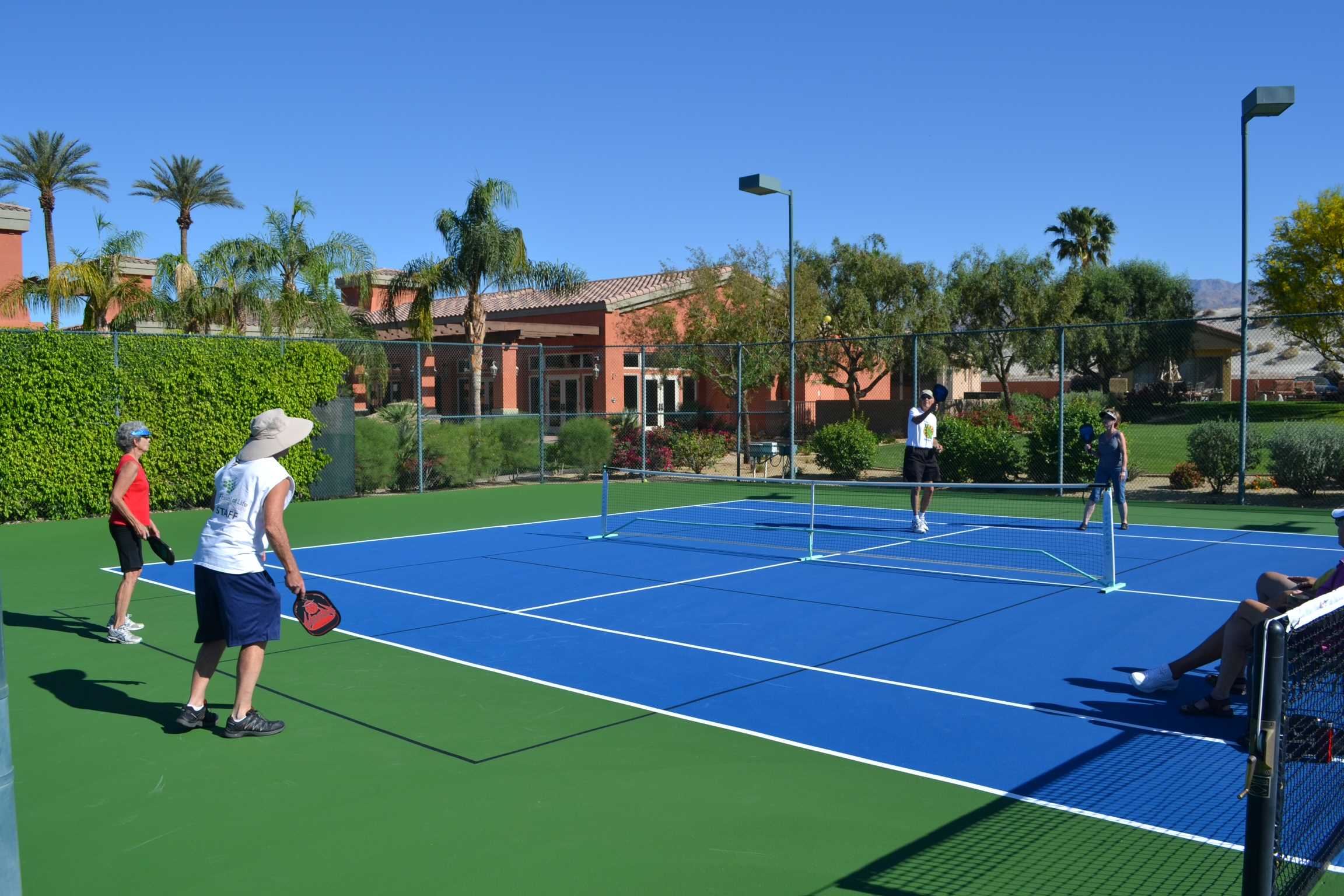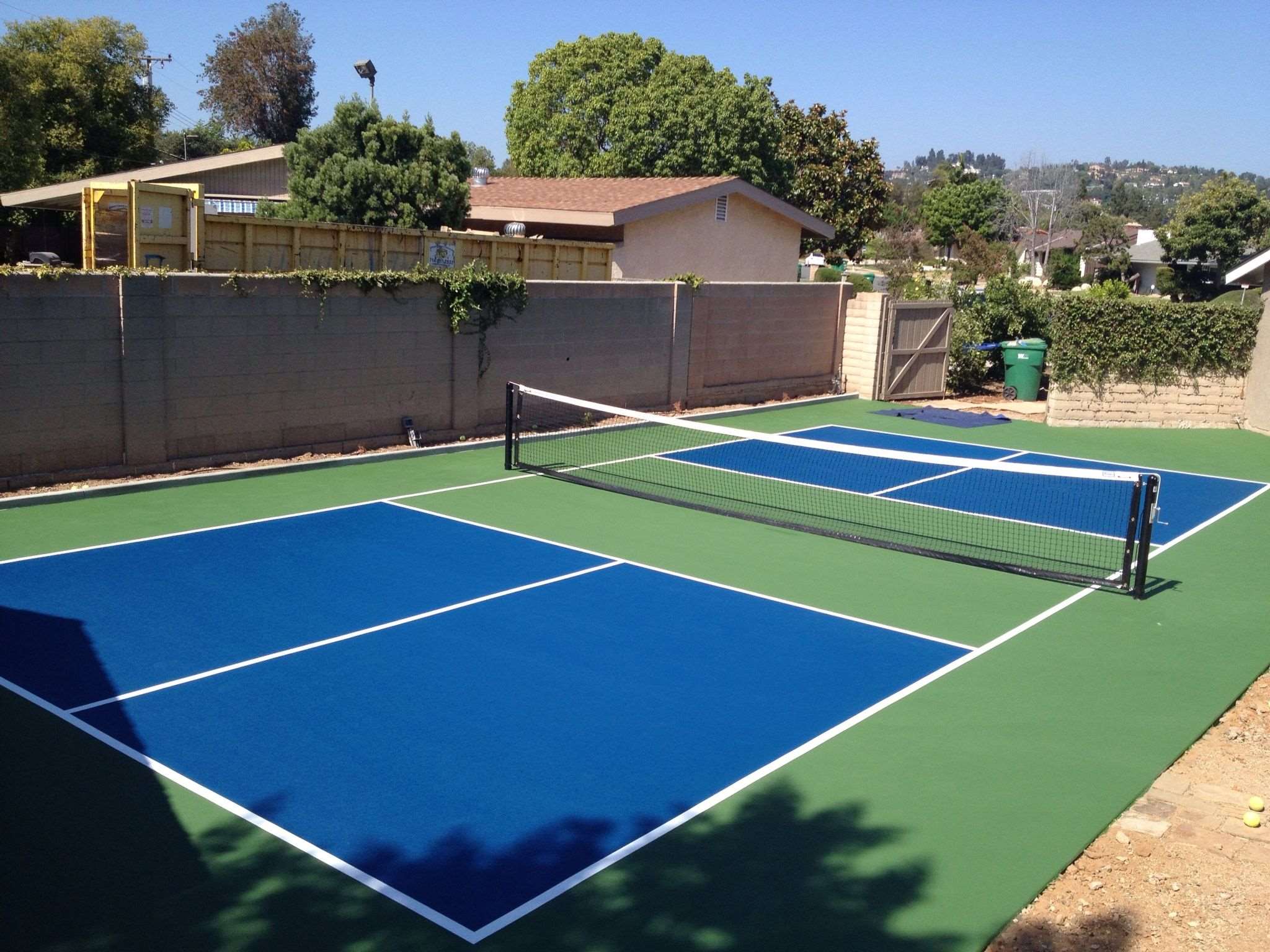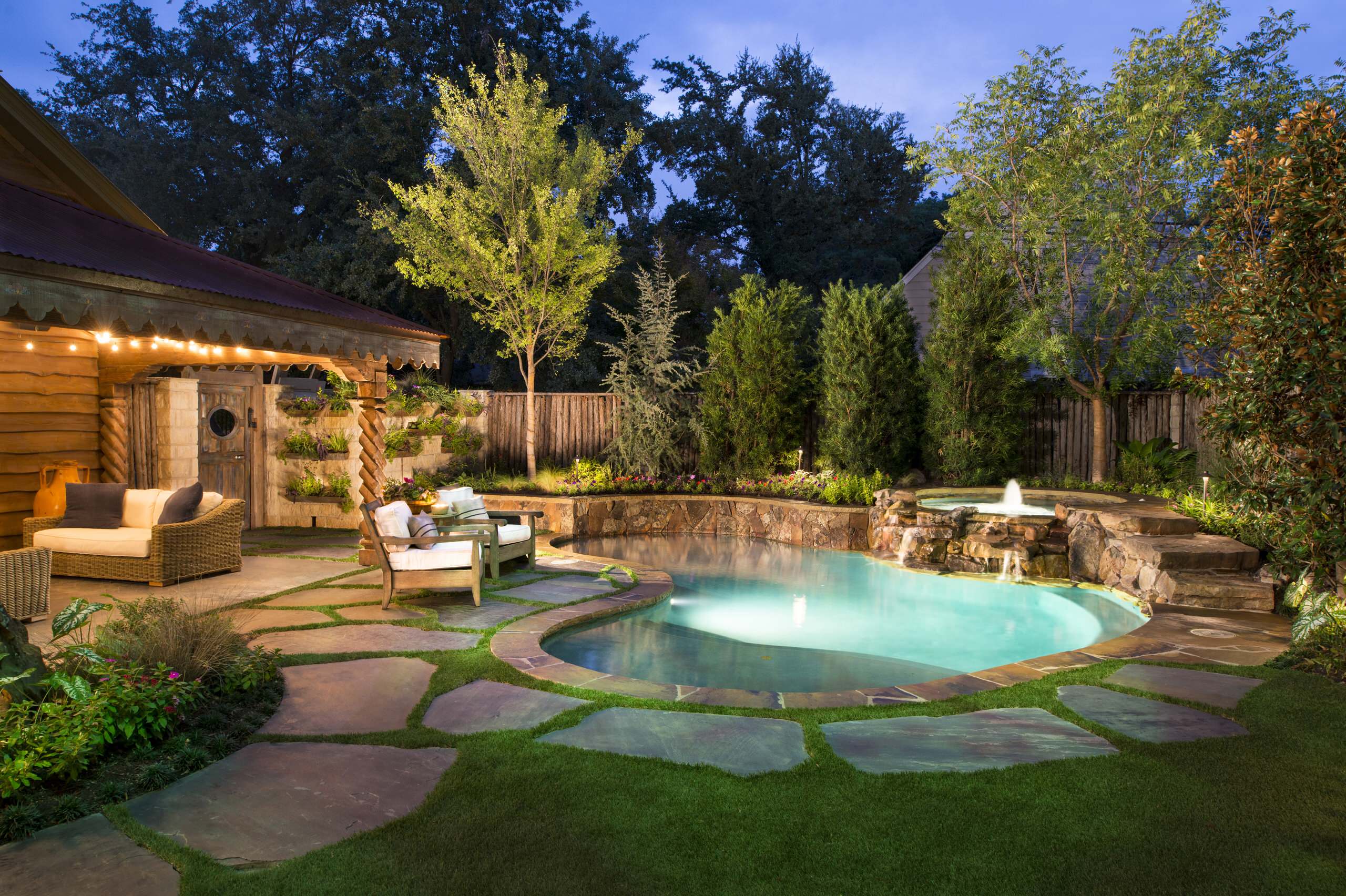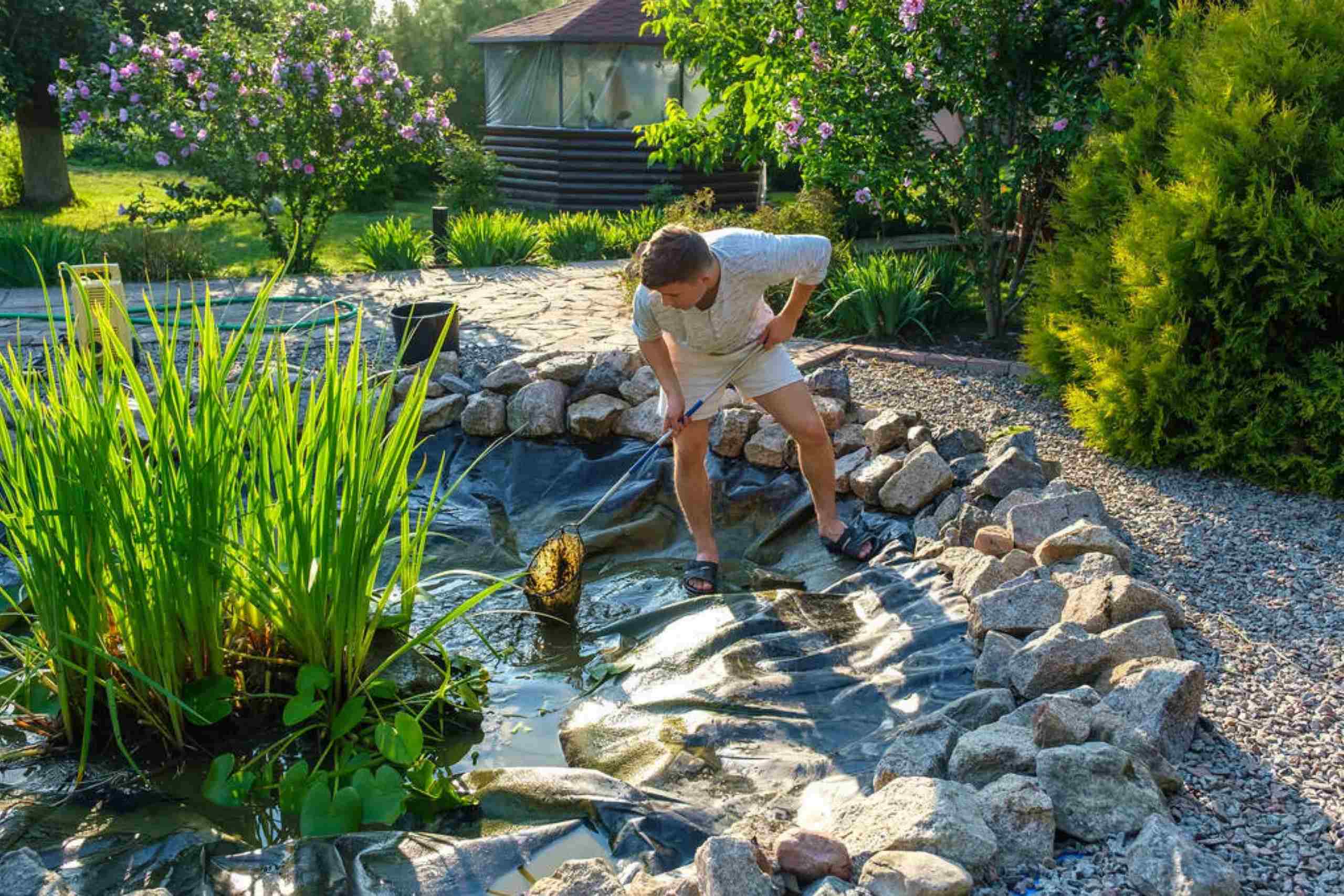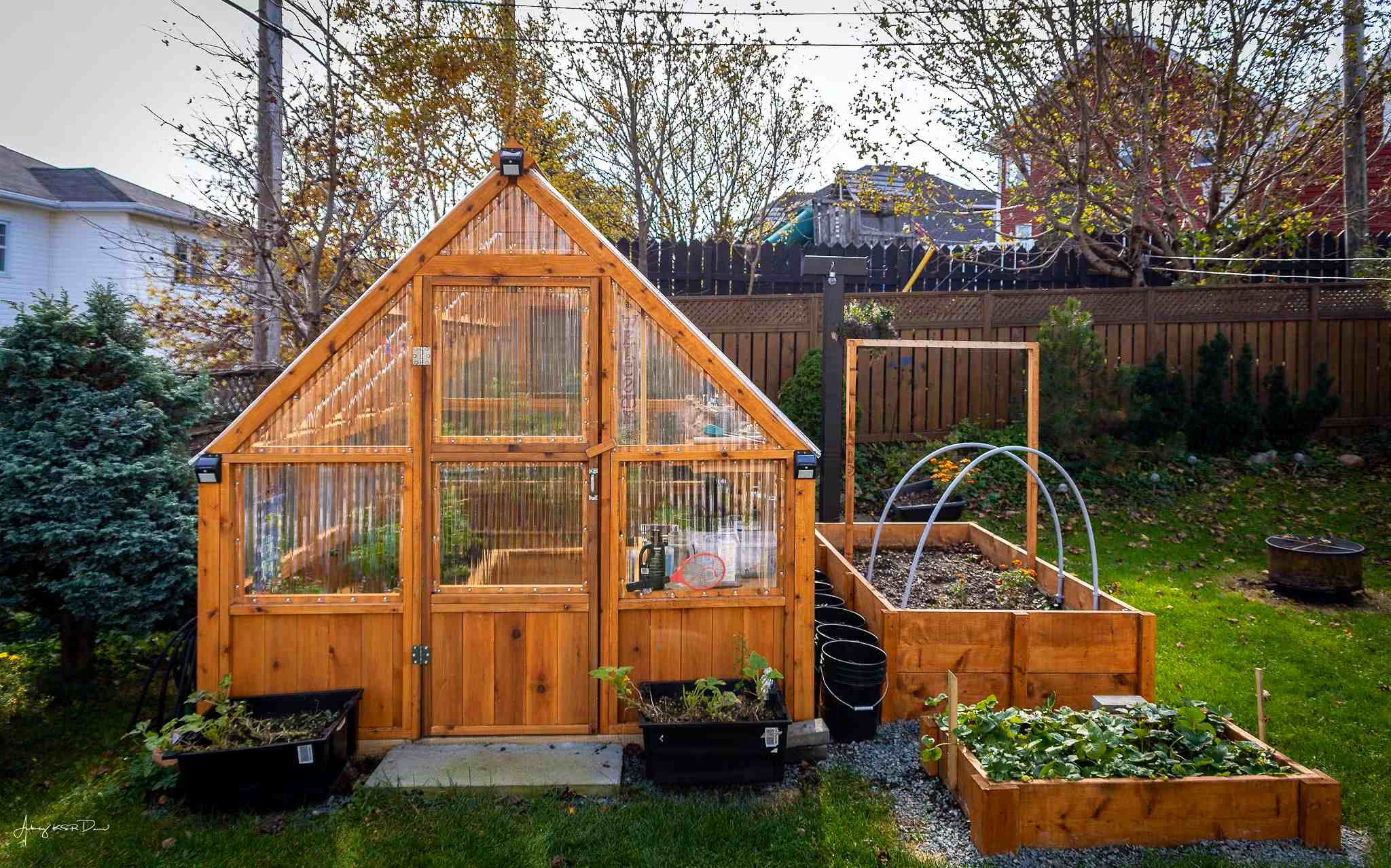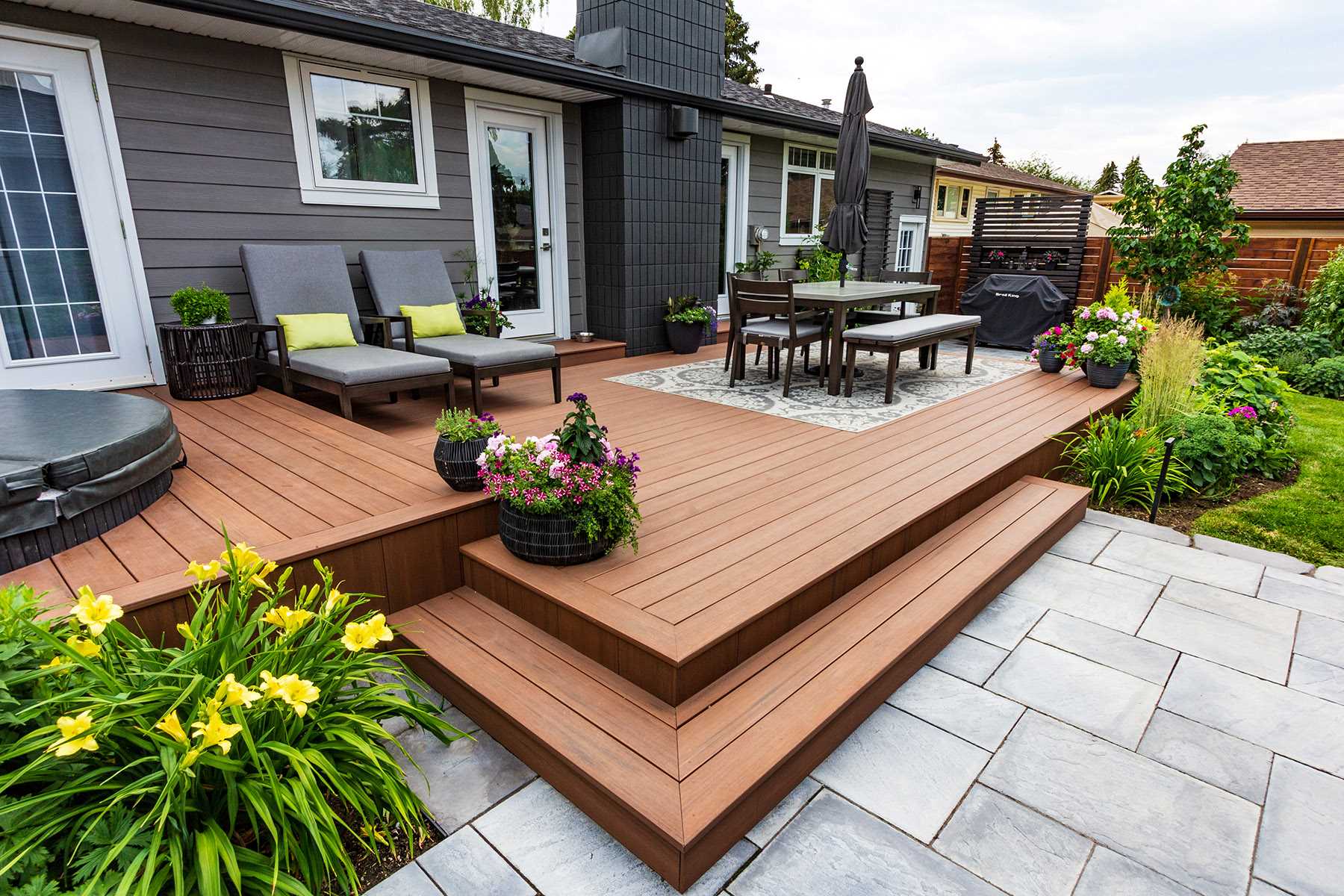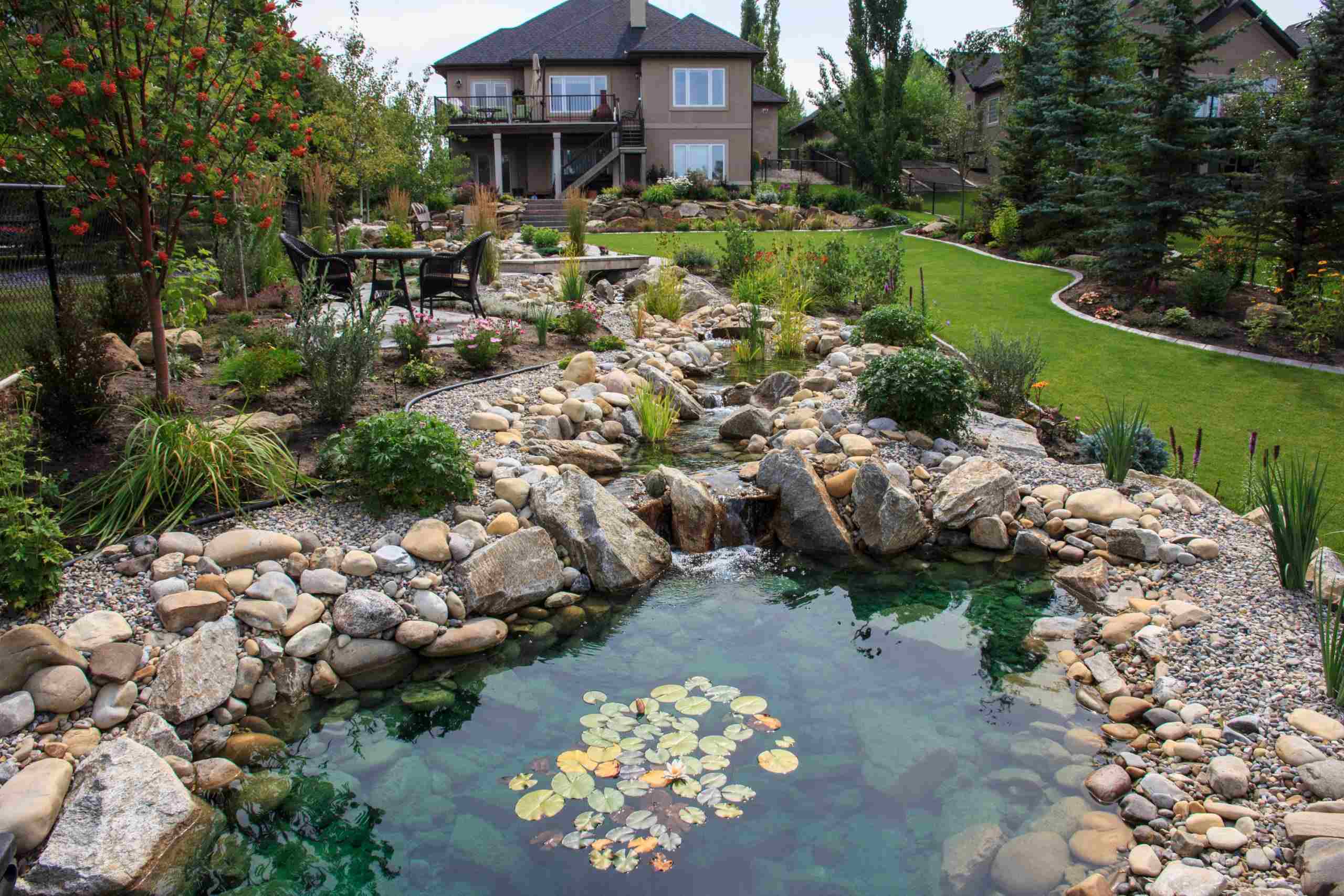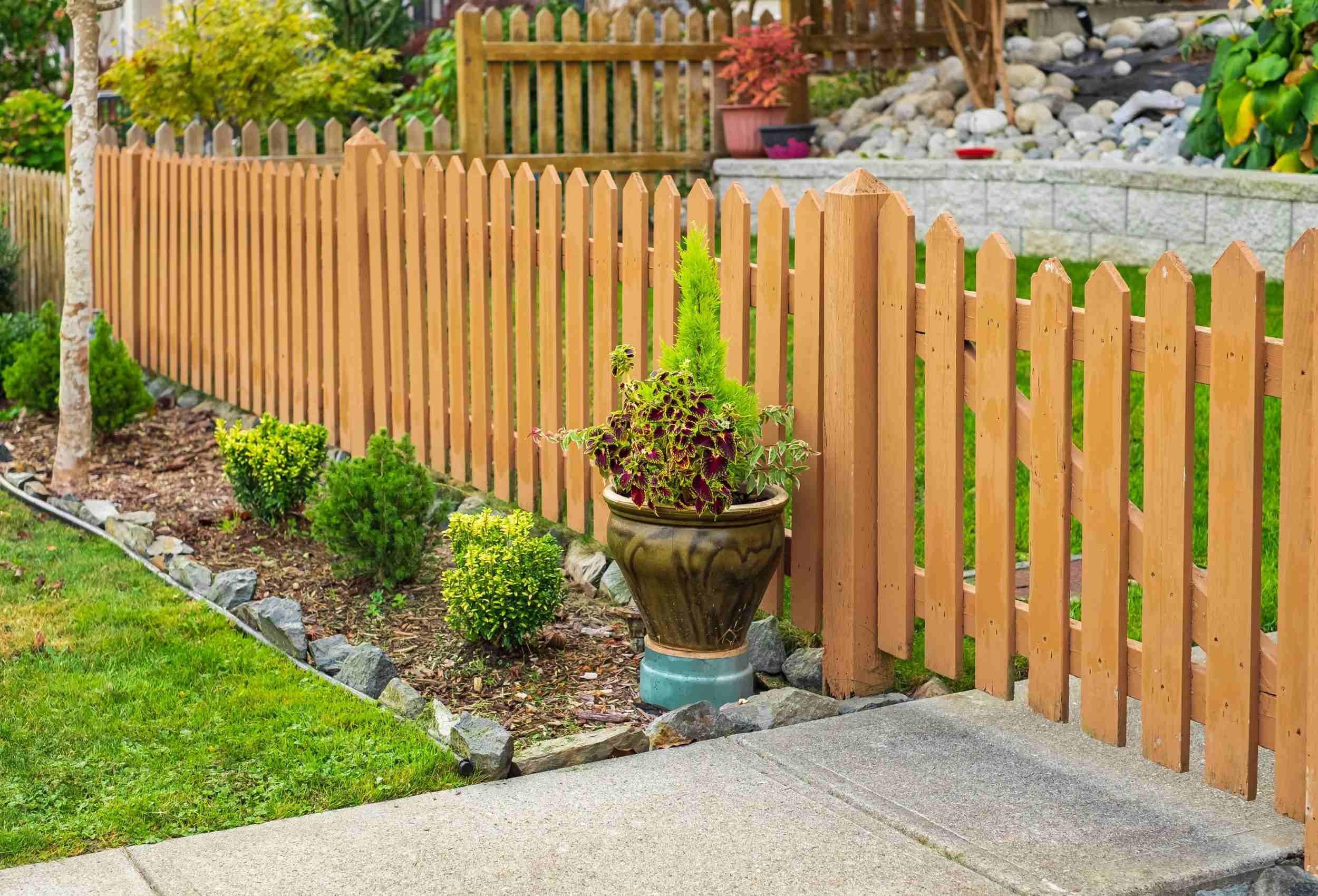Home>Gardening Techniques>DIY Projects>How To Build A Dirt Bike Track In Your Backyard
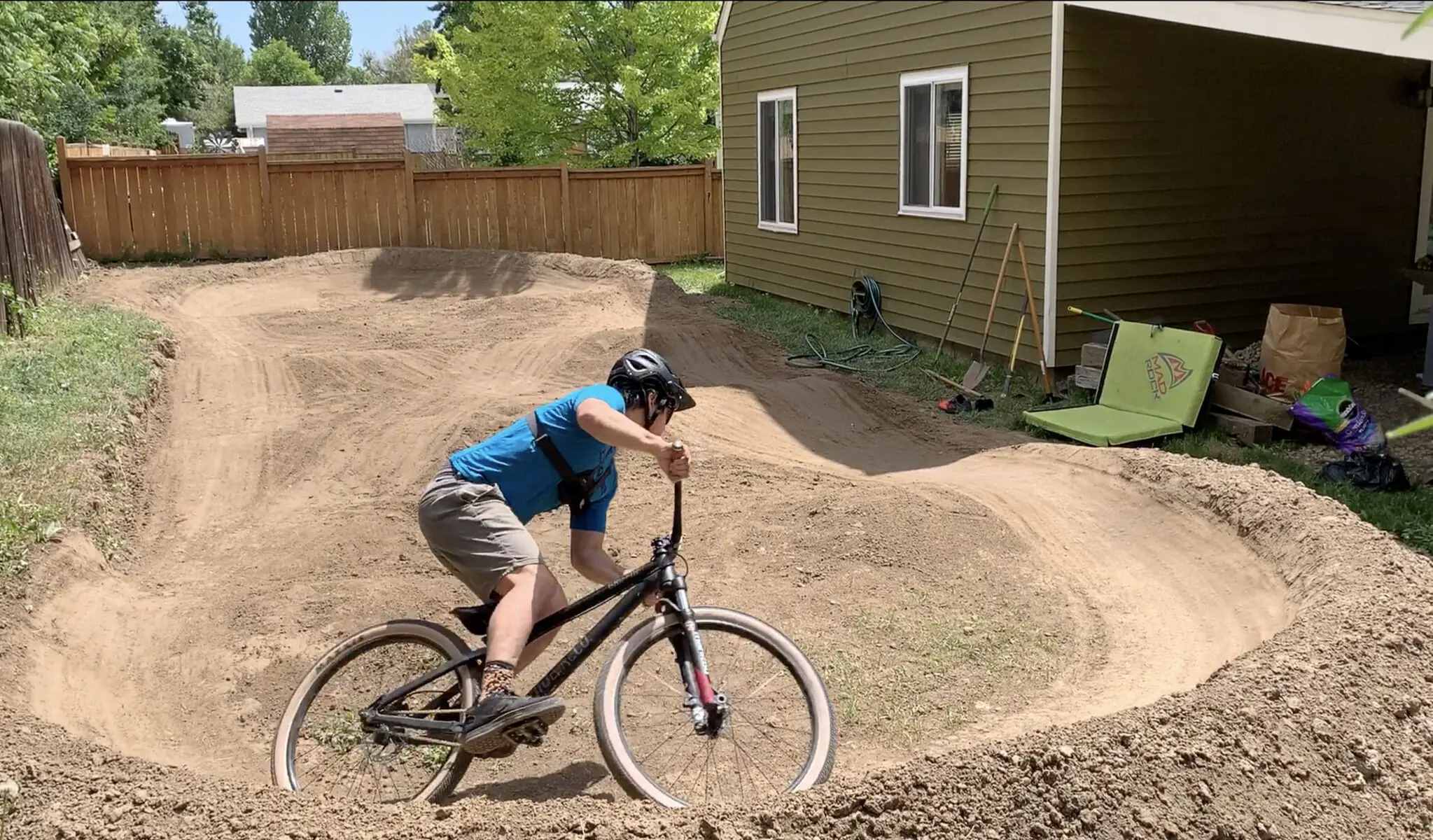

DIY Projects
How To Build A Dirt Bike Track In Your Backyard
Modified: February 7, 2024
Learn how to create your very own dirt bike track in your backyard with this step-by-step DIY project guide. Enhance your outdoor activities and unleash your inner adventurer!
(Many of the links in this article redirect to a specific reviewed product. Your purchase of these products through affiliate links helps to generate commission for Chicagolandgardening.com, at no extra cost. Learn more)
Table of Contents
Introduction
Are you a dirt bike enthusiast looking to take your passion to the next level? Building a dirt bike track in your backyard can be a thrilling and rewarding project. Not only will it provide you with a convenient place to ride, but it will also allow you to customize the track according to your preferences.
Whether you’re a seasoned rider or just starting out, having your own dirt bike track can offer endless hours of fun and the opportunity to improve your skills. It’s also a fantastic way to bond with family and friends who share your love for off-road adventures.
While the idea of building a dirt bike track may seem daunting, it’s actually a feasible project that you can tackle with some careful planning and a bit of hard work. In this guide, we’ll take you through the step-by-step process of creating your very own backyard dirt bike track.
Before we dive into the specifics, it’s important to note that building a dirt bike track requires some space. Ideally, you should have a backyard area that is at least half an acre in size. This will provide enough room for all the necessary features, including straights, corners, jumps, and obstacles.
Keep in mind that the size and complexity of your track will depend on your skill level and the available space. If you’re a beginner or have limited room, you can still create a smaller track that will provide plenty of enjoyment and challenges.
Now that you have an idea of what to expect, let’s begin the journey of building your very own dirt bike track. Prepare to dig in, get your hands dirty, and experience the thrill of riding on your own custom track.
Step 1: Planning and Designing Your Track
Before you start digging and shaping your dirt bike track, it’s crucial to take the time to plan and design it properly. This step will ensure that your track is safe, functional, and provides an enjoyable riding experience.
The first thing you should consider is the layout of your track. Think about the type of track you want to create – will it be a motocross-style track with jumps and tight corners, or a more flowing trail-style track with natural obstacles? Visualize how you want the track to flow and what features you would like to include.
Next, you’ll need to assess the available space in your backyard. Take measurements and consider the natural features of the land, such as slopes, trees, and any existing obstacles. These elements can be incorporated into your track design to add challenge and variety.
Once you have a clear vision of your track layout, it’s time to mark it out on the ground. Use some stakes, twine, and spray paint to outline the track’s boundaries. This will give you a better sense of the track’s size and shape and allow you to make any necessary adjustments before moving forward.
During the planning phase, it’s essential to consider safety. Ensure that there is enough room for proper clearance between features, such as jumps and corners, to prevent accidents. Additionally, take into account the proximity to other structures or areas of your property to avoid any potential damage or disturbances.
It can be helpful to sketch your track design on paper or use computer software to create a visual representation. This will not only assist you in finalizing the layout but also serve as a reference when building the track.
Remember, designing your track is an opportunity to get creative and tailor it to your preferences and skill level. Take the time to plan thoughtfully and ensure that you’ll have a track that you and your fellow riders will enjoy for years to come.
Step 2: Clearing and Preparing the Area
Now that you have a well-thought-out design for your dirt bike track, it’s time to roll up your sleeves and begin clearing and preparing the area. This step is crucial for ensuring a smooth and safe riding surface.
Start by removing any vegetation, rocks, and debris from the designated track area. Use a shovel, rake, or other appropriate tools to clear the ground. This will help create a clean slate for building your track and prevent any potential hazards.
Next, take a closer look at the soil conditions. The ideal dirt for a dirt bike track is loamy soil that holds moisture without becoming too muddy or dusty. If your area has heavy clay or sandy soil, you may need to amend it with organic matter or sand to achieve the right consistency.
If there are any large rocks or roots, remove them to create a smooth riding surface. You can use a pickaxe or an excavator for more significant obstructions. Be meticulous in this process, as even small obstacles can pose a safety risk.
Once the area is cleared and free of obstructions, it’s time to ensure proper drainage. Good drainage is essential to prevent water buildup and maintain a rideable surface. If your area tends to hold water, consider incorporating berms, trenches, or drainage pipes into the track design to redirect excess moisture.
If you plan to extend the track beyond the initial cleared area, mark the additional sections and repeat the clearing and preparation process. Remember to maintain the desired track width and incorporate any natural features that you want to include in the track design.
Throughout the clearing and preparation process, prioritize safety. Wear proper protective gear, including gloves, eye protection, and sturdy footwear. Be mindful of any potential hazards and take necessary precautions to avoid accidents.
By thoroughly clearing and preparing the area, you’re setting a solid foundation for building your dirt bike track. The time and effort you invest in this step will significantly impact the overall quality and safety of your track.
Step 3: Creating the Foundation
Now that the area is cleared and prepped, it’s time to create a solid foundation for your dirt bike track. The foundation is crucial for ensuring stability, longevity, and optimal riding conditions.
The first step in creating the foundation is to loosen the soil. Use a rototiller or a tractor with a ripper attachment to break up compacted soil and create a loose surface. This will improve drainage and promote better soil compaction during the construction process.
After loosening the soil, it’s time to shape the track’s base. Start by establishing the desired track width and using a tractor or heavy-duty roller to flatten and compact the soil. This will help create a firm and even surface for building the track features.
Next, you’ll need to add a layer of gravel or crushed stone to the track. This will further enhance stability and drainage. Spread the gravel evenly across the track, and use a compactor or roller to compact it firmly into place.
Once the gravel layer is compacted, it’s time to add a layer of clay or topsoil. This layer will provide the ideal riding surface for your dirt bike track. Spread the clay or topsoil evenly over the gravel and use a tractor or roller to compact it properly.
During the soil compaction process, periodically check the track’s surface for levelness and smoothness. Make any necessary adjustments to ensure an even and consistent riding experience throughout the track.
Aim for a track surface that is firm but not too hard. The goal is to create a balance between support and traction for your dirt bike tires. Test the surface by walking or riding a bike over it to assess its firmness and grip.
Keep in mind that the foundation creation process may require multiple passes and adjustments to achieve the desired results. Be patient and meticulous in this step, as a well-constructed foundation will contribute to the overall quality of your dirt bike track.
With the foundation in place, you have set the stage for building the track’s features and bringing your vision to life. The solid and stable foundation will ensure a safe and enjoyable riding experience for years to come.
Step 4: Shaping the Track
With the foundation laid, it’s time to bring your dirt bike track to life by shaping its features. This step is where your creativity and vision come into play, as you sculpt the track to provide exhilarating jumps, challenging turns, and thrilling sections.
Start by focusing on the track’s straights and corners. Use a tractor or motor grader to shape the straights, ensuring they are wide enough to accommodate riders comfortably. Create long, sweeping turns that offer a smooth flow and maintain a consistent width throughout.
When shaping the corners, consider the skill level of the riders who will be using the track. Beginners may prefer wider, more gradual turns, while experienced riders might enjoy tighter, more technical corners.
As you shape the track, it’s important to maintain a good balance of different obstacles and features. Incorporate jumps of various sizes and shapes, offering opportunities for different levels of airtime. Add berms or banked corners to provide stability and momentum during turns.
One way to add excitement and challenge to your track is by creating a rhythm section. This involves a series of jumps or bumps placed close together, allowing riders to flow through them with a rhythmic pattern. It adds a dynamic element to the track and tests riders’ ability to maintain speed and control.
Consider incorporating natural features of the land, such as hills or trees, into your track design. You can build jumps around these features or create sections that take advantage of natural elevation changes. This not only adds visual interest but also makes the track more unique and diverse.
Be mindful of having a good balance between technical sections and high-speed sections. This will keep the track engaging for riders of all skill levels. Variety is key to keeping riders excited and challenged throughout their laps.
Throughout the shaping process, take breaks to walk or ride the track, evaluating how different sections flow together. Make adjustments as needed to ensure a cohesive and enjoyable riding experience. Remember, the goal is to create a track that not only tests your skills but also brings joy and excitement.
Once you are satisfied with the shaping of the track, take some time to ride it yourself and get feedback from fellow riders. This will help you fine-tune any areas that may need adjustments or improvements.
With the track now shaped to perfection, it’s time to move on to the next step: adding jumps and obstacles that will take your riding experience to new heights.
Step 5: Adding Jumps and Obstacles
Now that you have shaped the track, it’s time to add the thrilling jumps and challenging obstacles that will take your dirt bike riding to the next level. Adding these features will provide excitement, test your skills, and enhance the overall enjoyment of the track.
Begin by identifying suitable locations for jumps and obstacles. Look for areas where natural elevation changes or slopes can be enhanced to create launching ramps for jumps. Consider the size and shape of the jumps, ensuring they match your skill level and those of other riders who will be using the track.
When building the jumps, start with a solid base to provide stability. Use a combination of dirt, gravel, and clay to construct the jump face, ensuring it has a gradual incline for optimal take-off. Pay attention to the landing area as well, which should be smooth and wide enough for a safe landing.
Remember to gradually increase the size and difficulty of the jumps if you have multiple jumps on the track. This will allow riders to progress and hone their skills as they navigate through the course.
In addition to jumps, consider adding other obstacles that can challenge riders and add diversity to the track. This could include whoops, which are a series of small bumps that riders must navigate through, requiring precise timing and control.
Another popular obstacle is the tabletop jump, which involves a flat top section that allows riders to jump and land safely on the other side. This type of jump is ideal for riders of varying skill levels, as they can choose to either clear the entire tabletop or gradually build up to it.
For more advanced riders, consider incorporating rhythm sections or step-up jumps that require precise timing and skill to navigate through. These features add an extra level of challenge and excitement to the track.
When adding jumps and obstacles, safety should always be a priority. Be sure to build these features with proper dimensions and take into account the speed at which riders will approach them. Inadequately constructed jumps or obstacles can lead to accidents and injuries, so pay close attention to design and construction guidelines.
It can be helpful to consult professional riders, track builders, or online resources for guidance and inspiration when designing and building jumps and obstacles. These experts can provide valuable insights and ensure that your track meets safety and performance standards.
Once the jumps and obstacles are constructed, take the time to test them yourself and get feedback from other riders. Make any necessary adjustments to ensure that they meet your expectations and provide a thrilling riding experience.
With the jumps and obstacles in place, your dirt bike track is now ready to be ridden and enjoyed. But before you hit the track, there are some important steps to consider for its maintenance and upkeep.
Step 6: Watering and Maintaining the Track
Now that your dirt bike track is complete, it’s crucial to establish a regular watering and maintenance routine to keep it in optimal condition. Proper maintenance will ensure that the track remains safe and enjoyable to ride for an extended period of time.
One key aspect of track maintenance is watering. Watering the track helps to control dust, maintain soil moisture, and improve traction. The frequency of watering will depend on the weather conditions and usage of the track.
Consider investing in a water truck or sprinkler system that can evenly distribute water over the track surface. This will aid in preventing excessive drying out of the soil, which can lead to hard and unsafe riding conditions.
When watering, it’s important to strike a balance between not over-watering, as this can lead to a muddy and slippery track, and not under-watering, which can result in dust and poor traction. Experiment with different watering techniques until you find the right balance for your track.
In addition to watering, regular track maintenance is essential. Inspect the track regularly for any signs of erosion, wear and tear, or damage to jumps and obstacles. Fix any issues promptly to ensure a safe riding experience.
Maintaining the track also involves reshaping jumps and regrading corners when necessary. Over time, jumps may become worn down or lose their shape, and corners may develop ruts. Take the time to reshape them as needed to maintain the track’s integrity and safety.
Regularly inspect and repair the track’s drainage system. Clear any debris or blockages that may hinder proper water flow. By ensuring good drainage, you can prevent water buildup and maintain a rideable surface even after heavy rain or snowfall.
Encourage riders to respect the track and follow good etiquette. Remind them to avoid unnecessary skidding or rutting that can damage the surface. Implement track rules and guidelines to ensure everyone’s safety and the longevity of the track.
Consider organizing regular track maintenance days with fellow riders and enthusiasts. This can be a fun and productive way to keep the track in top shape. Tasks such as repairing jumps, filling in ruts, and cleaning up debris can be accomplished more efficiently with a group effort.
Lastly, regularly seek feedback from riders who use the track. They can provide valuable insights and suggestions for improvements and maintenance. Adjustments may be needed over time as your riding style or preferences change.
By implementing a consistent watering and maintenance routine, you can ensure that your dirt bike track remains in excellent condition and continues to provide a thrilling riding experience for years to come.
Step 7: Safety Considerations
When it comes to building a dirt bike track in your backyard, safety should always be a top priority. Taking the necessary precautions and implementing safety measures will help prevent accidents and injuries, ensuring a safe and enjoyable riding experience for everyone.
First and foremost, it’s crucial to wear the appropriate safety gear when riding on the track. This includes a helmet, goggles, gloves, boots, and protective clothing. Investing in high-quality gear that fits properly will provide you with an extra layer of protection.
Inspect your gear regularly to ensure it’s in good condition and free from any defects. Replace any damaged or worn-out equipment to maintain optimal safety standards.
When designing the track, keep in mind the skill level of the riders who will be using it. If the track is intended for riders of varying skill levels, consider incorporating separate sections or alternative lines that cater to different abilities.
Set clear rules and guidelines for using the track and ensure that all riders are aware of them. Establish speed limits, no-passing zones, and safe riding practices to minimize the risk of accidents. Enforce these rules and encourage riders to respect them.
Inspect the track regularly for any safety hazards. This includes checking for loose rocks, protruding objects, or dangerous gaps in jumps. Address any issues promptly to maintain a safe riding environment.
Consider installing safety barriers or fencing around the track to prevent unauthorized access and protect riders from potential hazards. Ensure that these barriers are sturdy and provide adequate protection.
Before riding, warm up properly and familiarize yourself with the track. Take the time to walk or ride the track at a slower pace to assess its conditions and any potential hazards. Pay attention to changes in terrain or track conditions that may affect your ride.
Encourage responsible riding behavior and mutual respect among riders. Reckless or aggressive riding can lead to accidents and injuries. It’s important to maintain a safe and cooperative atmosphere on the track.
Finally, be mindful of your own physical condition and avoid riding when fatigued or under the influence of drugs or alcohol. It’s crucial to make sound judgments and prioritize safety at all times.
By prioritizing safety considerations and implementing the necessary precautions, you can create a backyard dirt bike track that provides a safe and enjoyable riding experience for riders of all skill levels.
Conclusion
Building a dirt bike track in your backyard is an exciting endeavor that allows you to create a customized riding experience right at home. Throughout the steps of planning, clearing, shaping, and adding jumps and obstacles, you can unleash your creativity and design a track that meets your specific preferences and skill level.
By carefully planning and designing your track, you can ensure that it flows well and offers a variety of challenges. Clearing and preparing the area sets the foundation for a safe and enjoyable riding surface. Shaping the track allows you to create straights, corners, jumps, and obstacles that test your skills and provide endless excitement.
Regular watering and maintenance will keep your track in optimal condition, ensuring its longevity and safety. Remember to prioritize safety considerations, including wearing proper gear, setting clear rules, and regularly inspecting the track for hazards.
Building a dirt bike track in your backyard is not only a fun project but also a great way to improve your riding skills, spend time with friends and family, and enjoy countless hours of adrenaline-fueled adventures. With careful planning, hard work, and attention to detail, you can create a backyard dirt bike track that provides lasting memories and endless enjoyment.
So, grab your helmet, start your engines, and get ready to experience the thrill of riding on your very own carefully crafted dirt bike track!

